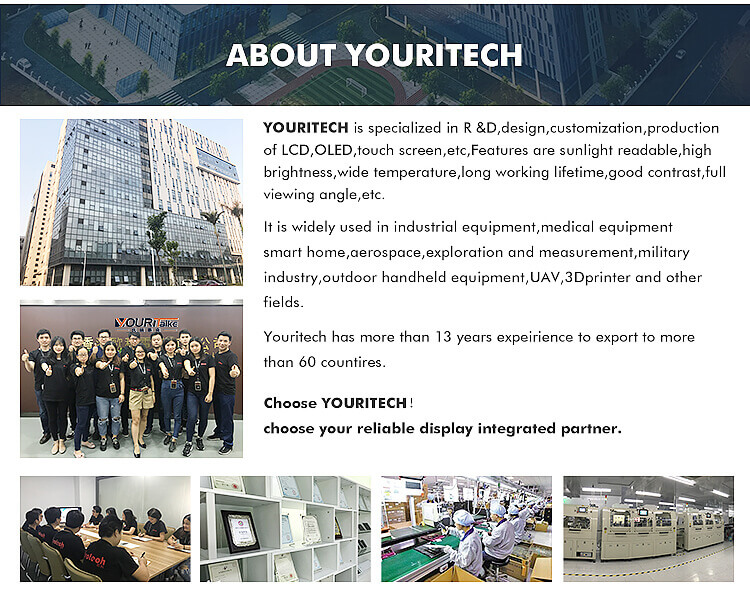Writer: lilyRelease Time: 2023-01-12 08:40Browse: 807
The lcd screen interface mainly includes: RGB, LVDS, EDP, MIPI, MCU, SPI, please refer to the following detailed explanation:
RGB interface: RGB color is a color standard in the industry. It is obtained by changing the three color channels of red (R), green (G) and blue (B) and superimposing them with each other. RGB is the color representing the three channels of red, green and blue. This standard includes almost all the colors that human vision can perceive. It is one of the most widely used color systems at present. It has the characteristics of high speed, low power consumption and many varieties.
LVDS interface: LVDS, that is, Low Voltage Differential Signaling, is a low-voltage differential signal technology interface. A digital video signal transmission method developed to overcome the shortcomings of high power consumption and large EMI electromagnetic interference when transmitting broadband high-bit rate data in TTL level mode. The LVDS output interface uses a very low voltage swing (about 350mV) to transmit data through differential transmission on two PCB traces or a pair of balanced cables, that is, low-voltage differential signal transmission. Using the LVDS output interface, the signal can be transmitted at a rate of several hundred Mbit/s on the differential PCB line or balanced cable. Due to the low voltage and low current drive mode, low noise and low power consumption are realized.
EDP interface: EDP interface is a fully digital interface based on the DisplayPort architecture and protocol. It can transmit high-resolution signals with simpler connectors and fewer pins, and can transmit multiple data at the same time, so it The transmission rate is also much higher than LVDS. The advantages of the EDP interface are quite obvious, especially in high-definition screens.
MIPI interface: LVDS is Low Voltage Differential Signaling, which is a low voltage differential signal technology interface. It is a digital video signal transmission method developed by American NS company to overcome the shortcomings of large power consumption and large EMI electromagnetic interference when transmitting broadband high bit rate data in TTL level mode. It is a high speed low voltage, low power consumption, low EMI, strong anti-interference ability, differential signal interface.
MCU interface: the most commonly used connection mode at present, generally 80 system (68 system no longer exists). There are 8 bits, 9 bits, 16 bits and 18 bits for data bit transmission. The connection is divided into: CS/, RS (register selection), RD/, WR/, and then the data line. The advantage is: the control is simple and convenient, without clock and synchronization signal. The disadvantage is: GRAM is consumed, so it is difficult to achieve a large screen (above QVGA).
SPI interface: SPI is a serial peripheral interface. It was first defined by Motorola on its MC68HCXX series processors. It enables the MCU and various peripheral devices to communicate in a serial manner, thereby exchanging information. The SPI has three registers: SPCR of the control register, SPSR of the status register and SPDR of the data register. Peripheral devices mainly include network controllers, LCD display drivers, FLASHRAM, A/D converters, and MCUs. The SPI interface is mainly used between FLASH, EEPROM, AD converter, real-time clock, and digital signal processor and digital signal decoder.
The above is the mainstream interface of LCD screen








